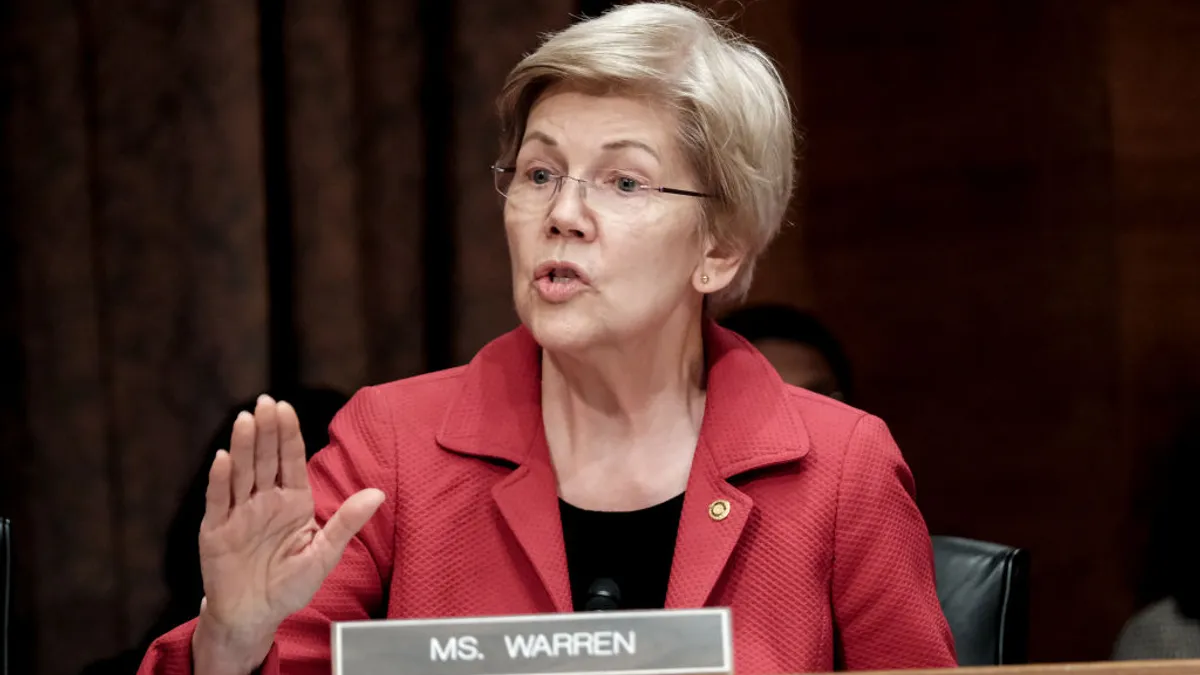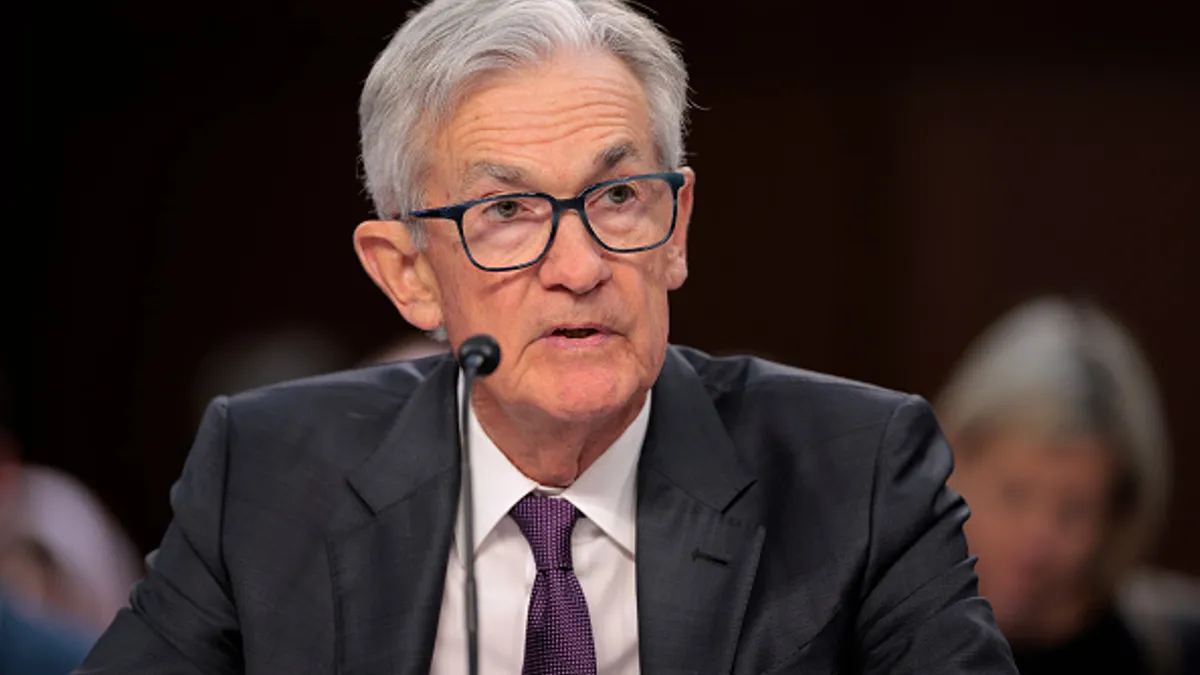About as soon as Jane Fraser became the first woman to run a U.S.-based Wall Street bank, analytical minds moved on to: What’s the next step?
Some may have seen promise in JPMorgan Chase putting Jennifer Piepszak and Marianne Lake in line to succeed longtime CEO Jamie Dimon. And that’s still a play in the long game.
Others may have put stock in the rise of an even younger generation, watching the career trajectory of Stephanie Cohen at Goldman Sachs after she was named the bank’s co-head of consumer and wealth management in 2020.
2024 may find change frustratingly slow. Three years after Fraser took charge at Citi, she remains the only woman CEO among the 10 largest U.S. banks. Cohen is out, leaving banking altogether after Goldman made her a division chief in 2022 — but then pulled away from the division. And the Dimon countdown, at last glance, is set to stretch at least another two years.
The timing of Dimon’s departure had been such a point of speculation that the CEO, in perpetuity, would respond that he’d stay another five years. That timeline moved last May, when Dimon said he planned to remain another “3½” years. Math would pin his retirement date to the end of 2026 -- which makes sense because, when JPMorgan called Dimon’s “five years” bluff in 2021, it gave him a “special award” worth $52.6 million that he can access only if he stays through 2026.
And even though Piepszak and Lake are still seen as the front-runners to be JPMorgan’s next CEO, the bank Monday, in its proxy statement, said, “should the need arise … in the near-term, we view [JPMorgan Chief Operating Officer Daniel] Pinto as a key executive who is immediately ready to fulfill the responsibilities of the CEO.”
That may be the bank’s desire for continuity talking. Pinto served as JPMorgan’s de facto chief while Dimon recovered from emergency heart surgery in 2020. It may also reflect the bank’s struggle to hand the reins over to a younger generation.
On that, if one were to look at the compensation disclosure JPMorgan included in Monday’s proxy statement, one would find that neither Piepszak nor Lake is the bank’s highest-paid woman (of the executives listed). That title belongs to Mary Erdoes, JPMorgan’s asset and wealth management CEO, who made $27 million in 2023, compared with $18.5 million each for Piepszak and Lake.
That also makes Erdoes the highest-paid woman listed in any of the top six banks’ proxy materials. Fraser made $26 million at Citi last year.
This isn’t breaking news. Erdoes out-earned Fraser by the same margin, $1 million, in 2022. But it points to the idea that 2024 may be an exercise in continuity from its preceding 12 months.
Is pay the solution?
If pay is where observers find social justice, 2024 may not be the year.
Independent adviser Newground Social Investment has called on Goldman Sachs to annually disclose statistically adjusted pay gaps by gender and race across its workforce, as well as its unadjusted median pay gap.
Goldman’s board is recommending that shareholders vote against the proposal April 24, saying more information on adjusted pay gaps will be included in an upcoming report about the bank's talent, diversity and benefits.
“Reporting median pay gaps on an unadjusted basis, as requested in the proposal, does not provide information that is accurate or useful, as it does not take into account” employee roles, tenure or geography, the board wrote.
A similar proposal last year from James McRitchie of CorpGov.Net and other Goldman shareholders received 31% support, American Banker reported.
Goldman last month said it used a third-party labor economist to conduct an adjusted pay gap analysis of 2023 compensation, and found median pay for women at the company is 99% of what it is for men. Median pay for nonwhites in the U.S. is 99% of what white employees make, the bank said.
Meanwhile, Citi — the first U.S. Wall Street bank to voluntarily publish unadjusted pay gap data — said last month it “paused” its annual review of racial and gender pay gaps in deference to the bank’s wide-ranging reorganization.
The bank “looks forward to resuming routine pay equity reviews” after “aligning roles to the new organizational structure,” the bank said in its proxy statement.
Citi will conduct its 2023 pay equity analysis at some point this year, but the precise timing is unknown, a source told American Banker, adding the pause “doesn't signal any shift away” from Citi’s pledge to close the pay gap.
A pay gap can arguably be seen in the upper echelons, too. At $26 million, Citi’s Fraser received the smallest compensation package of any top-six U.S. bank CEO in 2023 — though that can’t be hung entirely on gender. As of Dec. 31, she was the most recently named CEO among the banks. Morgan Stanley CEO Ted Pick took that bank’s top role Jan. 1, and observers will be able to compare his pay on even ground with Fraser next winter. Pick made just less than Fraser in 2023, at $25 million — without serving as CEO, and not counting the $20 million stock bonus Morgan Stanley gave him (and fellow CEO candidates Andy Saperstein and Dan Simkowitz).
Or is it the title?
As for the JPMorgan succession race, it’s anyone’s guess. The race began in earnest when Piepszak and Lake were made co-heads of the bank’s consumer and community banking unit in 2021. But the competition arguably intensified this January, when Piepszak was named co-CEO of JPMorgan’s expanded commercial and investment bank. Lake, at the same time, became sole head of the bank’s consumer and community banking division.
Observers can point to a handful of factors that would give the edge to either (or neither) candidate. Piepszak’s role puts her in front of the investment bank, seen a touch more crucial to JPMorgan’s business model. Lake is leading her division alone. The spoiler, not to be discounted, may be Piepszak’s fellow co-head (and latecomer to the race), Troy Rohrbaugh.
Some analysts who have followed the banking space may decry the notion that one of JPMorgan’s anointed women will have to defeat the other to gain the crown at the U.S.’s largest bank.
Maybe JPMorgan should take a page from Morgan Stanley’s playbook and give both a $20 million bump after the race is over.




















